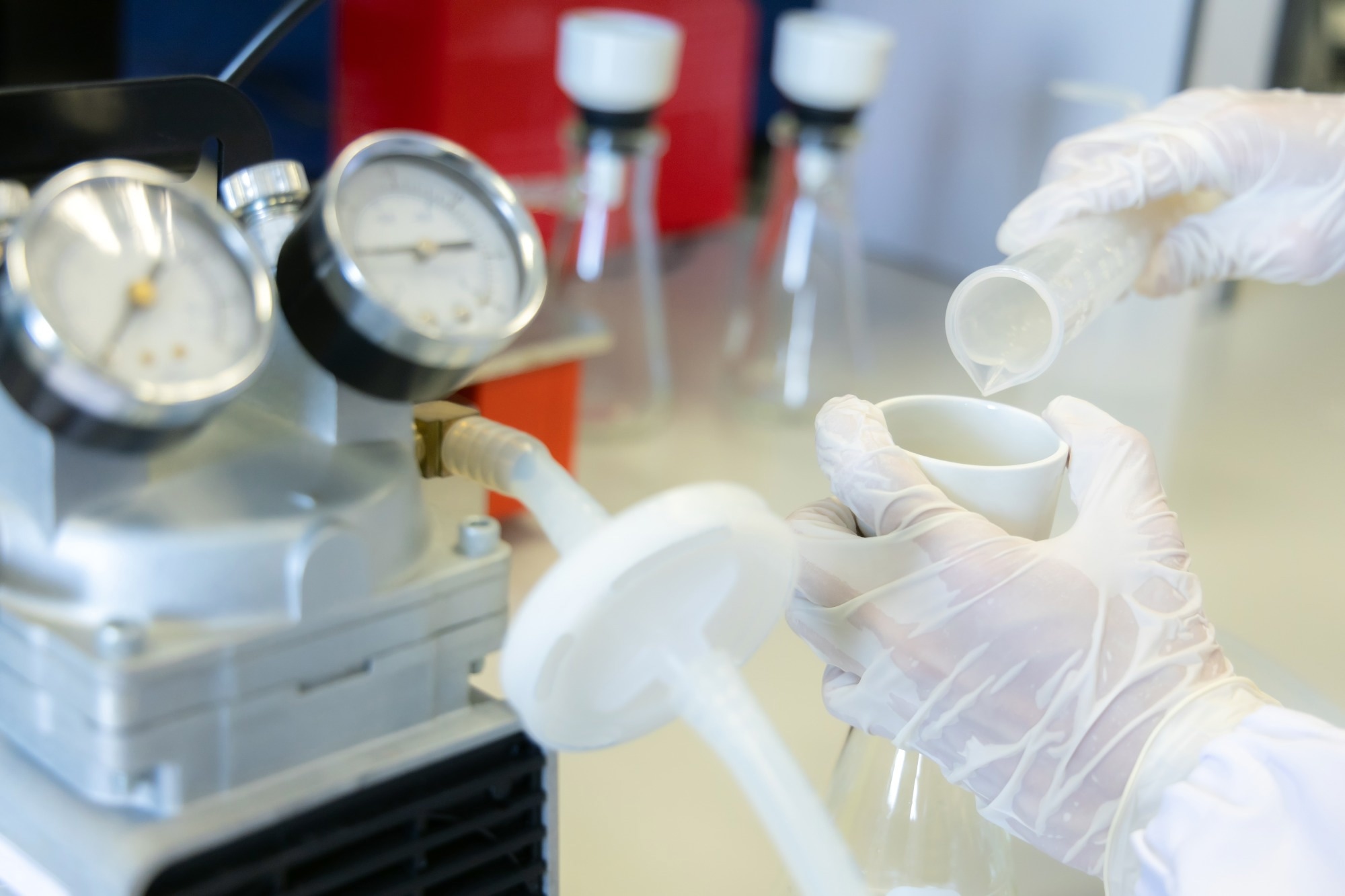Researchers from Aalborg University are working to transform the potential applications of biomass from wastewater treatment facilities. Phosphorus and other minerals can be extracted from wastewater, and biopolymers made from bacteria can be a sustainable substitute for items made from oil. The study was published in the journal Current Opinion in Biotechnology.

Image Credit: Siyanight/Shutterstock.com
The perspective is enormous because you are taking something that is currently waste and making high-value products from it.
Per Halkjaer Nielsen, Professor, Department of Chemistry and Bioscience, Aalborg University
The study's findings show a new use for surplus biomass in wastewater treatment facilities. The main focus is on biopolymers, lengthy chains of molecules produced by living organisms, including bacteria.
Synthetic polymers made from crude oil in the petrochemical sector are now utilized in various products, such as paints, adhesives, textile fibers, and plastics. However, biopolymer manufacturing at wastewater treatment facilities in the future will make it feasible to extract a sustainable substitute for oil-based polymers from a waste product.
In short, the work on biopolymers is about producing a lot of biomass in wastewater treatment plants that are bacteria that eat everything that enters the treatment plant so that only the pure water remains. Every single day, many tons of biomass are produced, depending on how big the treatment plant is, and this is typically converted in a biogas reactor so that you get energy out of it. A large part of the bacteria consists of biopolymers, i.e. the adhesive material around them, and biopolymers are in demand in the industry as a sustainable alternative to oil-based polymers.
Per Halkjaer Nielsen, Professor, Department of Chemistry and Bioscience, Aalborg University
Biopolymers can be utilized as binding agents in paper and construction materials and as a substance for flocculation, a process of harbor sludge, lake, and wastewater treatment plant water purification in which small particles combine and settle.
Biopolymers from wastewater treatment facilities are fire-retardant, so if biopolymers can be produced economically in a sustainable manner, a sizable market is possible, as indicated by the REThiNk research project.
Several hundred distinct bacterial species can be found in wastewater treatment plants, producing various biopolymers with various characteristics. To avoid simply being flushed out of the treatment plant, these bacteria employ the biopolymers as an adhesive to establish colonies and stick to surfaces.
By altering the water's pH and temperature, these biopolymers can be extracted to create cellulose and gelatinous biopolymers that can be utilized in various industrial processes. As hundreds and thousands of tons of bacteria are produced in Denmark annually, it is predicted that it will be possible to create factories that produce biopolymers from Danish wastewater treatment plants, offering great potential.
As a bonus, minerals and other important elements, including phosphorus, which is on the EU's list of essential raw materials that might become scarce in the future, can be extracted from wastewater that reaches the treatment facilities.
The REThiNk project aims to provide the groundwork for industrial scale-up in the near future to bring about a true revolution in biomass recycling from wastewater treatment facilities worldwide. It is also necessary to map the bacteria in wastewater treatment facilities worldwide to forecast how they may contribute to the synthesis of biopolymers, the extraction of phosphorus, and more.
There is great potential if companies can see that the product can be used for something and thus want to invest in testing and developing it. And this requires that we build pilot scale plants so that we can produce not just grams, but kilograms and in a few years' time many tons. We can take 20-30 percent of the biomass and turn it into biopolymers that can replace petroleum products, but it actually also replaces seaweed.
Per Halkjaer Nielsen, Professor, Department of Chemistry and Bioscience, Aalborg University
“Today, many biopolymers are produced from seaweed from large kelp forests that are endangered. So if we can find other ways to extract biopolymers, it is a clear advantage for the environment and biodiversity as well,” Per Halkjær Nielsen explained.
In the REThiNk project, Aalborg University works in partnership with Delft University in the Netherlands and Aarhus University.
Journal Reference:
Zahra, S. A., et al. (2024) Rethinking characterization, application, and importance of extracellular polymeric substances in water technologies. Current Opinion in Biotechnology. doi.org/10.1016/j.copbio.2024.103192.